A Rainy Season Odyssey
The rivers turn turbid and golden, rapids smearing the surface like toffee coming to the boil; young rice seedlings and their older siblings stipple paddy terraces in varying greens; waterfalls appear everywhere you look.
Old women from the hill tribes carry leaves for making hats, sporting bright wellies over their leggings. Fireflies switch on their mating lights at night. Dramatic storms with sheet lightning pass over, sky darkening like a giant’s hand cast over the sun and after the rain, the earth has a rich, deep scent of settled soil and teeming life.
The nine-year-old was looking forward to our first proper rainy season journey. As he put it, “We might as well stay up all night. I’ve always wanted to stay up all night, and I’ve never done it. The bus the next day leaves so early we might as well… Plus, we’ll save sooo much money on the hotel room…”
The bus strained all the way from Sapa, gears crescendoing on the slightest incline, winding steadily round gorges pierced by hundreds of sudden monsoon waterfalls, spouting colours from brilliant white to tartrazine yellow, past stands of tall, dark mountain bamboo, and those forlornly drooping pines which are to Asian highlands as cypresses are to Greek.
When the mud becomes more than usually hillocked, and the ascent is sufficiently steep to outclass a vehicle which clearly does not have long for this world (about once an hour), we are kicked off the bus to process uphill through the mud like a refugee column.
We stopped at this beautiful gorge for, err, an hour or so. Not, in fact, to admire the view. But so the trucks you can see just past the parked lorries at the bottom of the shot could finish repairing the road sufficiently for the other vehicles to get through.
As we head down, the skies brighten and the temperature warms dramatically. There are paddy terraces, suspension bridges, tumbling rivers, clusters of conical hills leaning crazily askew like so many drunken witches’ hats.
Moving upwards again, the sky becomes darker, the scenery more dramatic, and the going slower.
Repairing roads in this region is a task that might define Sisyphean. Since the landslips, which happened a couple of days ago, road crews have been working round the clock to break and lay sufficient rock on the mud to hold the next few vehicles, then smoothing the surface again for the next round.
Clearly, I should have taken the chap at the guesthouse literally when he explained that we would be leaving a day later than planned because, “No road! No road! So no bus,” and mimed landslides (with hindsight) quite effectively.
And, if not then, surely the way the old lady with the sequinned top and velour trackies set up not so much a camp as a plastic sleeping mat and rice-sack pillow in the centre of the aisle rather than take a seat would have warned me that something was up.
But no. I thought we would be there by nightfall.
It is dark, pelting with rain and riven with sheet lightning when we arrive at a riverside dorp by the name — I later discover — of Muong Lay. It is about 6pm and we have been in transit, if not exactly moving, for ten hours or so. We are ordered off the bus into mud of a consistency I have never encountered before. It is smooth and clay-y, almost syrupy in parts, quite extraordinarily slick and rich, forming gloopy puddles that would be delightful were one in wellies. Or even in reach of a shower.
Z removes his sandals before the mud does it for him and we squish through the dark to the town’s main source of illumination, a cafe which doubles as someone’s front room with the usual backlit plastic sign advertising com (rice), pho (noodle soup), bun (noodles) and my (a different type of noodles).
The atmosphere is carnivalesque. Two horrifically stoned yet amiable truckers, with slender, Mongolian features and bloodshot eyes, are sharing a large pipe and nibbling on unidentified chicken bits.
We are welcomed as old friends. (For some strange reason, our fellow falang have opted to stay on the bus.) Would Zac like a hit on the pipe?
“No,” he says. “I’m nine years old. I don’t smoke ANYTHING.”
There is laughter. They try to force it on him.
“NO!” he says. “I don’t smoke.” More laughter.
Would I, perhaps, care to join them?
I also pass. The beers begin to flow.
The scion of the household, aged three, is brought out in his Bob the Builder orange pyjamas and forced to shake Z’s hand for a photo. It makes him cry. A stray motorcyclist appears, clad head to toe in translucent plastic raingear, giving him a slightly ghostly effect. More photos are taken.
We are informed that the road will not now be fixed until morning and we will be spending the night in Muang Lay. In other words, on the bus. Which is not a sleeper bus. Nor a coach. Nor a passenger bus. But one of those 1960s cannibalised school buses, like the chicken buses of Guatemala.
Z is complimented on his beauty. The conversation turns to me.
Am I married? Where is my husband?
“We saw him in Hanoi,” I say. “He’s in England now, working, but we’ll be seeing him in Australia, later in the year.”
The rain is falling so thickly that the view through the open door looks like the beginning of a particularly steamy shower scene. (Albeit maybe one with a specialist edge.)
I ask how near we are to Dien Bien Phu. “It is one hundred million kilometres from here,” says one of the truckers.
I laugh, and observe that with no road it might as well be. He looks at me blankly.
The young, sweet-faced waiter, who is 26 but looks about nineteen, draws a map on the back of a carton of Vinataba cigarettes. We have, in the last twelve hours, covered roughly two hundred out of three hundred kilometres.
Surreally, a glamorous woman in flawless makeup, high heels, pale nylons and black silk cheongsam with sequinned trim, hair pulled back in a sparkly barrette, steps out of the mire that passes for the road and into the caff. She is, I would say, pushing forty, and well known to the denizens of the truck stop.
She slurps at her bowl of pho. Ribaldries fly her way.
Emboldened by the hormones which her arrival has provoked, our waiter leans closer into my personal space and puts his hand on my shoulder. “You can always stay here,” he says.
Oh god! I think. Here we go again.
We are saved by the emergence of the driver’s right hand man, still in his Ho Chi Minh pith helmet and pristine white T-shirt. The road is fixed! The bus is moving!
The mood on our transportation is festive. The old lady begins to spank folk with her fan for transporting mud onto the bus, and hence her tarpaulin bed. (Z and I, who look like we’ve been mudwrestling, get it vigorously.) The driver replaces Vietnamese ballads with Lady Gaga’s The Fame and spurs his chariot to the giddy heights of, ooooh, i don’t know, 30mph or thereabouts the second he hits a stretch of tarmac.
Men are working through the night welding tall bridges over the gorge as we pass by, blowtorches casting surreal shadows on the river far below. All dreams of staying up forgotten, Z falls asleep, and so do I, awaking at the ungodly hour of 3.30am in Dien Bien Phu, with two hours to wait for our next bus.
As we embark on our three hour journey to the Lao border, 40km away, in a minibus which, even by Asian standards, is tightly packed, the flatlands of Dien Bien Phu have a kind of ghostly beauty. Farmers work with hand-ploughs and buffalo to prepare for the new crop. Women set out their baskets full of fruit and vegetables. I see a signmaker wheeling his stand to work and one man riding his bicycle while towing a water buffalo on a piece of twine.
We sleep for most of the three hours it takes us to travel forty kilometres to the border. Once past formalities and through to the Lao side of the border we are greeted by… yes, a bulldozer, preparing our path.
Junior and I have now rather had it with the bulldozers. “Can’t they just finish the bloody road, ALREADY?” he asks me.
It is 3pm by the time we reach the bus’ destination: Muang Khua. Or, more precisely, the landing stage on the wrong side of the river from Muang Khua:
We take a longtail across, and a pickup to the bus station. There are, of course, no more buses to Luang Nam Tha. Udomxai, a construction industry hub with a very Chinese feel to it, three or four hours away, is our best bet for a place en route with an onward connection and a place to spend the night. And so, well, here we are.
We will be doing the bulk of our travelling by boat from here on in. There too you get to see a side of nature and a slice of life you would never imagine from a plane. But the rain will be most firmly on our side.

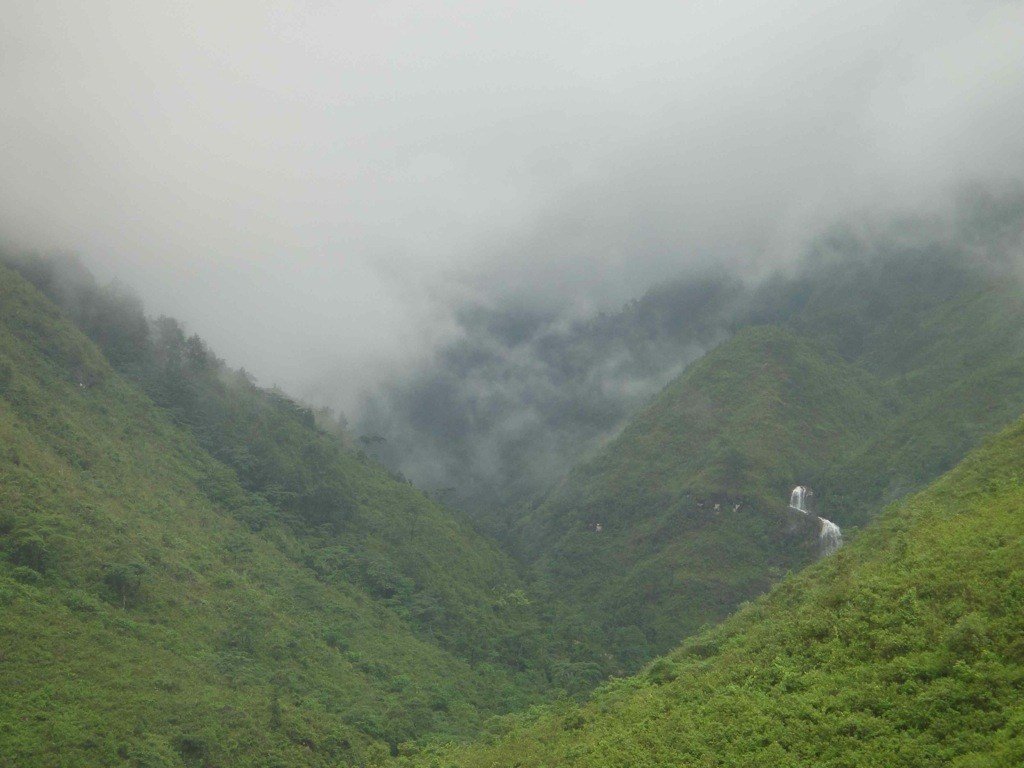
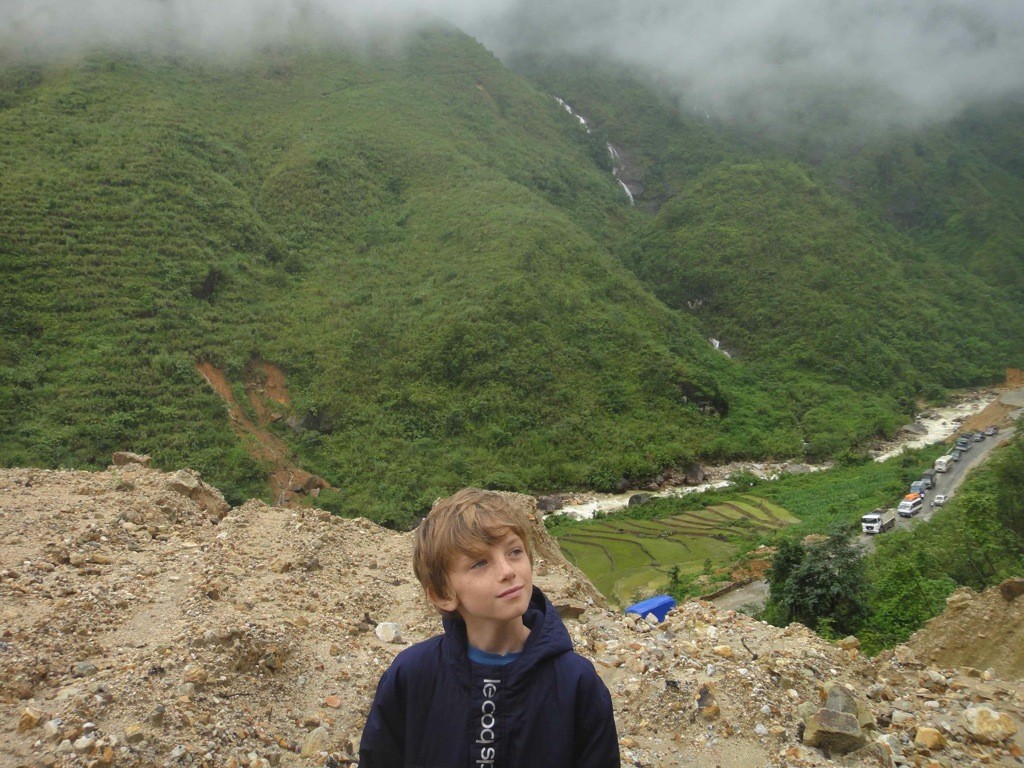
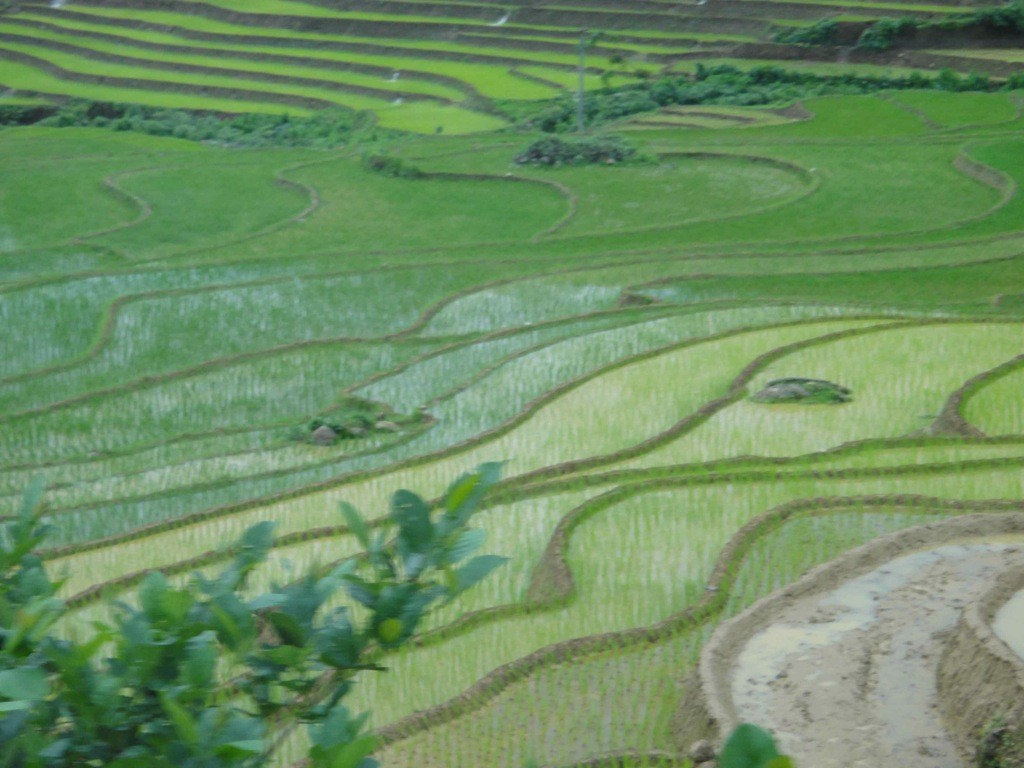
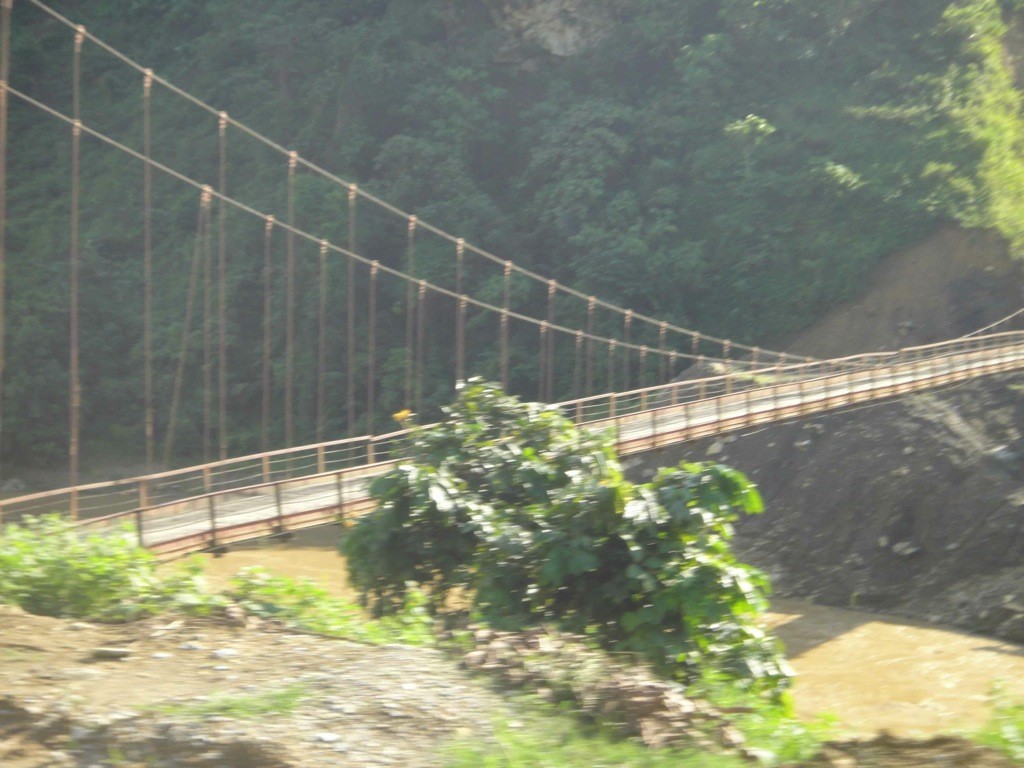
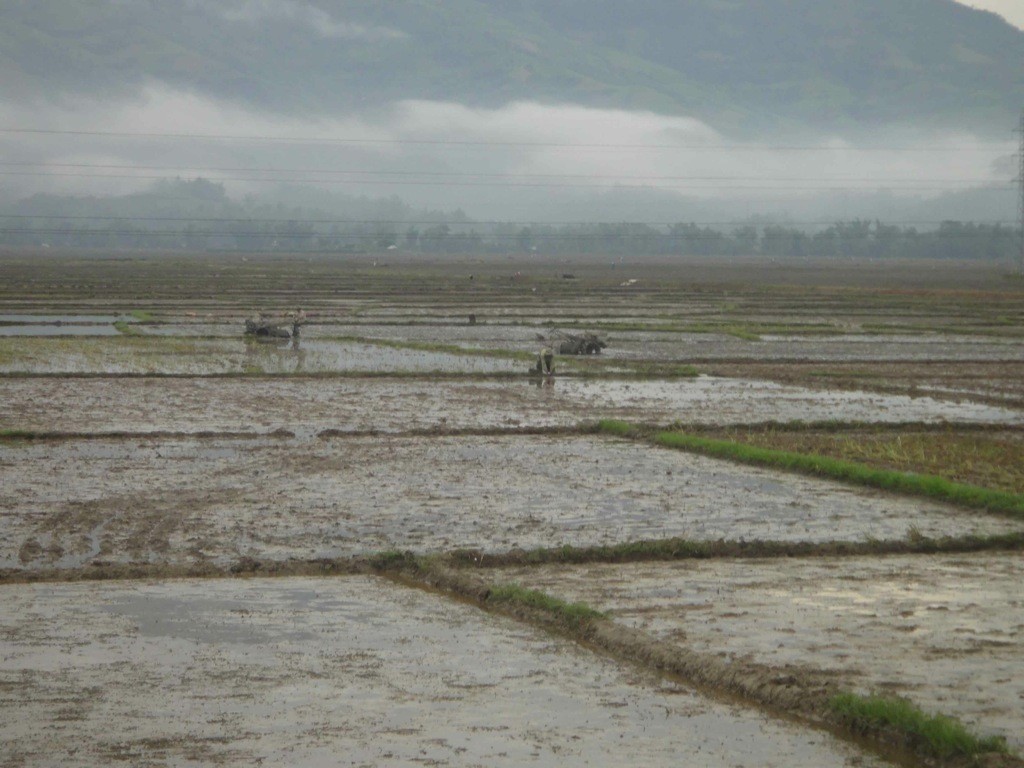
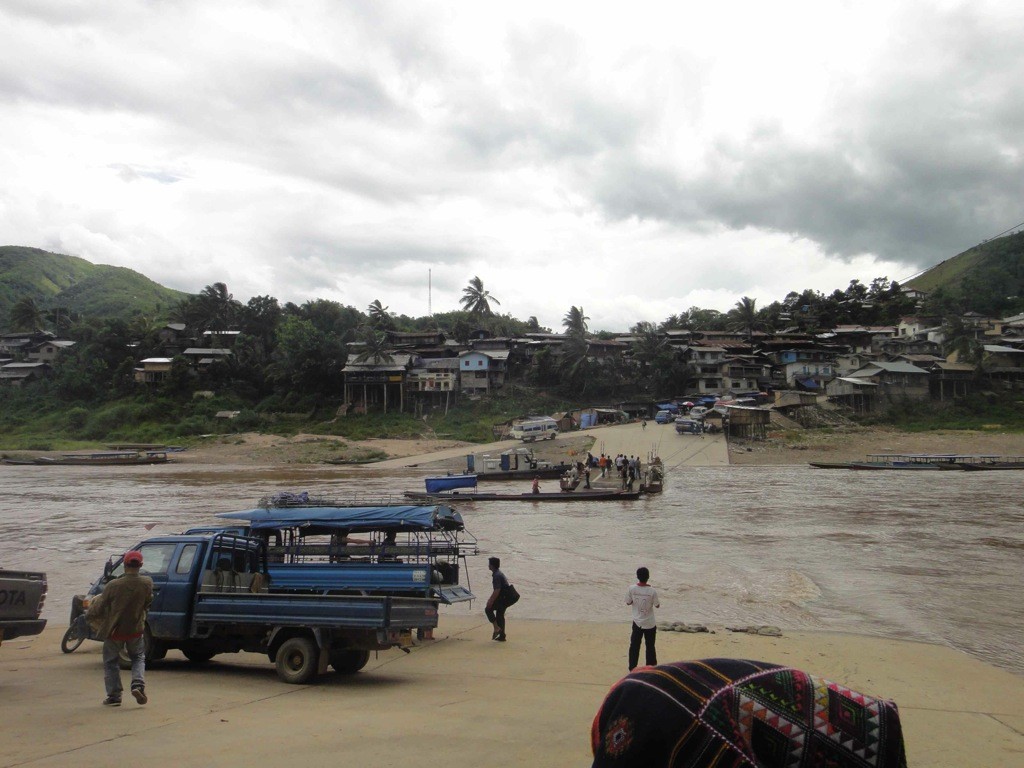
The padded rice fields reminds me of the Philippines’ rice terraces in Benguet.
Wow! I’m really impressed with Zac’s fortitude (and yours!)
Thank you! You sort of get into a zone, I find. Plus, I firmly believe you see and experience things travelling like a local that you would never do otherwise…
test